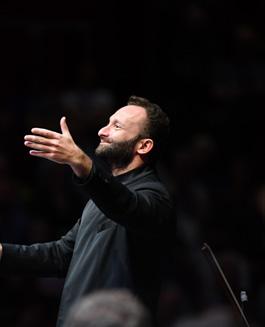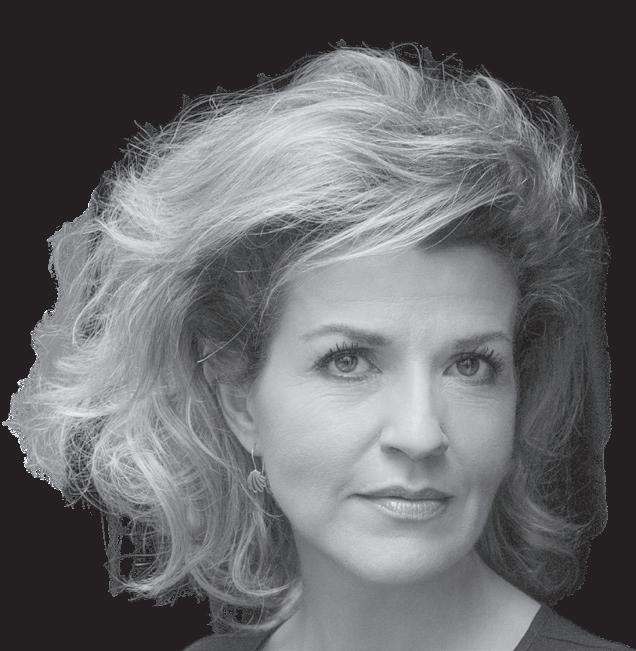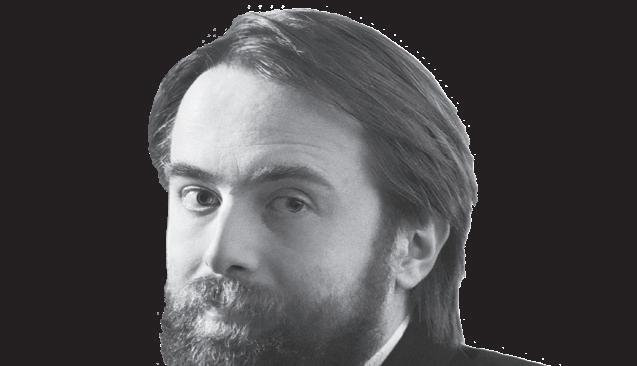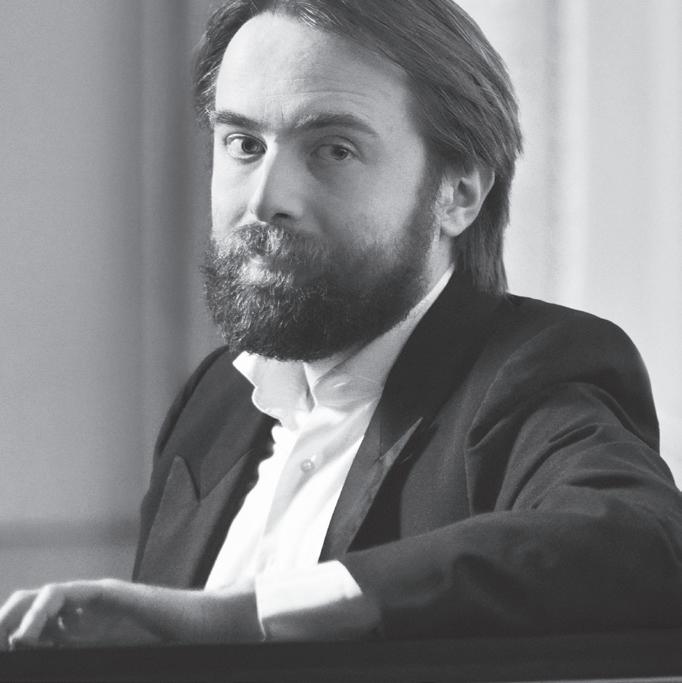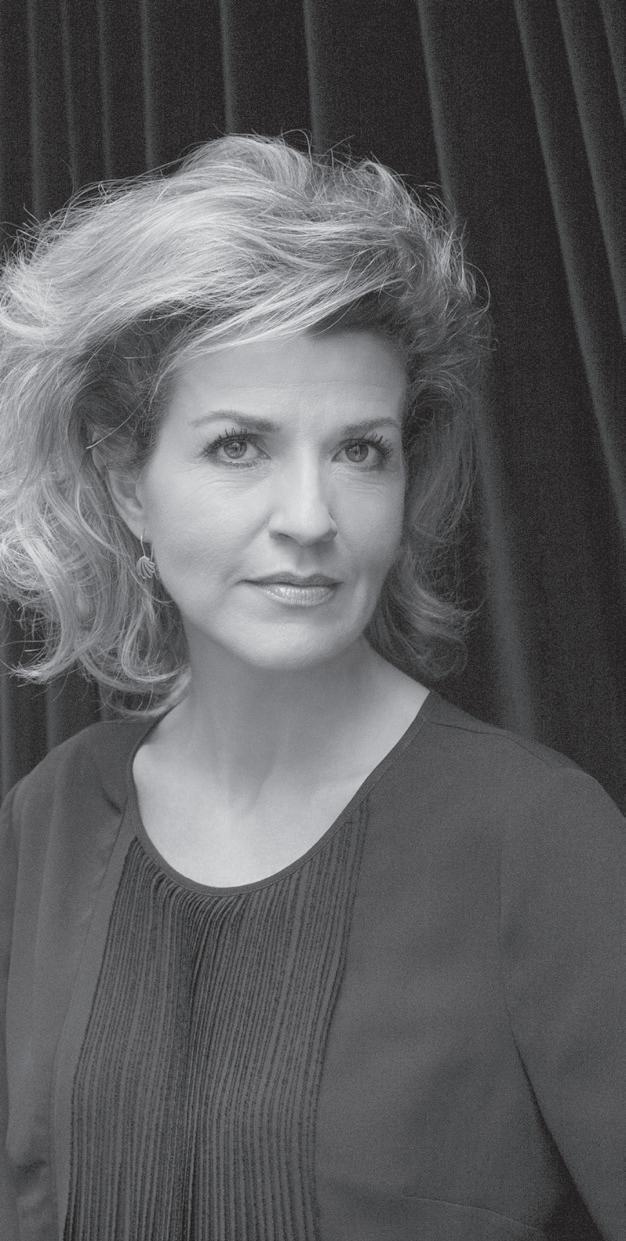NINETY-FOURTH SEASON
Tuesday, November 26, 2024, at 7:30
Orchestra Series
BERLINER PHILHARMONIKER
Kirill Petrenko Conductor
BRUCKNER Symphony No. 5 in B-flat Major
Adagio—Allegro
Adagio
Scherzo: Molto vivace
Finale: Adagio—Allegro moderato
There will be no intermission.
The Chicago Symphony Orchestra Association acknowledges support from the Illinois Arts Council.



COMMENTS by Phillip Huscher
ANTON BRUCKNER
Born September 4, 1824, Ansfelden, Upper Austria
Died October 11, 1896, Vienna, Austria
Symphony No. 5 in B-flat Major
COMPOSED
1875–76
FIRST PERFORMANCE
April 8, 1894, Graz, Austria. Franz Schalk conducting
INSTRUMENTATION
2 flutes, 2 oboes, 2 clarinets, 2 bassoons, 4 horns, 3 trumpets, 3 trombones, tuba, timpani, strings
Kirill Petrenko uses Nowak’s edition of the score from 1878.
APPROXIMATE PERFORMANCE TIME
73 minutes

Bruckner never heard his Fifth Symphony. He attended the premieres of all his other completed symphonies, conducting the first three himself, but by the time the Fifth was finally performed in 1894, Bruckner was too ill to make the journey to Graz, and so he left it in the hands of his disciple, Franz Schalk. It was just as well that Bruckner stayed home, for, as he had recently begun to suspect, Schalk was a traitor as well as a disciple. The score Schalk introduced to the world that April in Graz was a
travesty of Bruckner’s original—it was extensively cut (some 222 measures were omitted from the finale alone), and virtually every measure that Schalk retained he altered in some small but damaging way.
Whether Schalk was fooling himself, we will never know, but he obviously thought Bruckner was taken in. Here is the letter he sent the ailing composer two days after the premiere, full of the good-natured charm of a born crook:
Most honored Master: no doubt you have already had word of the tremendous impact made by your great and glorious Fifth. I can only add that for the rest of my life, I shall always remember that evening as one of the greatest experiences I ever shared in. Profoundly moved, I felt as if I were being transported into the realms of eternal greatness. No one who was not there to hear it can have any idea of the overwhelming power of the finale. Allow me, my most honored Master, to lay at your feet my offering of the most sincere admiration and to acclaim the composer of this glorious work. In profound gratitude, always your devoted Francisce.
above: Anton Bruckner, oil portrait by Hermann von Kaulbach (1846–1909), 1885
Devotion and admiration meant a lot to a hopelessly insecure man like Bruckner. But it’s hard to imagine that someone so uncertain of his own extraordinary talents would entertain— and even encourage—the criticism and advice of others (regardless of their qualifications for judging some of the most important music of the century) and then take it to heart. Time and time again, Bruckner returned to the drawing board, certain that he would get it right at last. Or he agreed to brutal cuts (Bruckner has always seemed longwinded to the unsympathetic listener) suggested by those who failed to understand that Bruckner’s music needs time and space to unfold.
But by the 1890s, Bruckner began to see that serious damage had been done to his work. In 1892 or 1893, he packed all his manuscripts away in a trunk; the will he drew up the next year entrusted their safekeeping to the Vienna Court Library. According to the German conductor Karl Muck, Bruckner gave him a manuscript of his unfinished Ninth Symphony shortly before his death, asking him to take it out of Vienna “so that nothing may happen to it.” There were other signs of a silent rebellion: when it came time to authorize the edition of the Fourth Symphony that Schalk and Ferdinand Löwe had prepared for publication, Bruckner simply refused to sign the printer’s copy.
Bruckner’s triumph, ultimately, was a posthumous one, for it is only recently that scholarship and justice have joined forces, and we are able to hear Bruckner’s symphonies more or
less in their definitive forms. It is not misleading to view October 20, 1935, as the first performance of Bruckner’s Fifth Symphony, for on that date— nearly sixty years after the score was completed and some forty years after the premiere in Graz—Bruckner’s score was heard for the first time in its original form.
Ironically, this symphony is one of the few Bruckner never revised extensively himself. In fact, he was still fussing with his Third and Fourth symphonies long after the Fifth was done. The Fifth Symphony was started early in 1875 and completed by mid-May 1876. Bruckner then took time to revise some other scores and to make a trip to Bayreuth in August to attend the first performances of Wagner’s Ring cycle. He made some relatively minor corrections in 1877, and the final work was done by January 4, 1878. Apparently, once he signed the copyist’s final score, in November 1878, he never touched the symphony again. The manuscript lay with Bruckner’s papers until Franz Schalk picked it up and began his own work on it fifteen years later.
Those critics who claim all Bruckner’s symphonies begin in the same way have forgotten the Fifth, for it alone opens with a slow introduction. These fifty measures set the stage for the next 450 measures in the same way a few slow bars at the start of a Haydn symphony prepare us for the music that follows. But Haydn worked to a different clock; traversing a typical Haydn first movement takes
little more than five minutes. Bruckner’s takes closer to twenty minutes, and so his introduction must tell us more. Clearly and methodically, Bruckner introduces us to important materials that we should recognize later on: first, quiet, slowly unfolding string music in B-flat (over the pizzicato pacing of the cellos and basses); then, after a pause, a fierce unison outburst from the entire orchestra (in G-flat); and then, after another brief pause, a majestic brass chorale in A major. It is a Bruckner symphony in miniature (an oxymoron, to be sure), spanning seemingly unrelated keys and moving from quiet repose to hair-raising furor.
But this is only the beginning, and from here, Bruckner moves imperceptibly into the Allegro and introduces his first theme—a vigorous, swinging melody in the low strings. The rest of the movement is full of the dramatic contrast, both in character and in tonality, that we remember from the introduction. As anticipated in those first fifty measures, the music now moves mysteriously through a number of remote keys; thematic material that echoes the first snatches of melody appears; the texture switches—sometimes abruptly—from delicate pizzicato or calm hymn-like chords to emphatic statements delivered in a blaze of brass. The introduction, now scaled down even further, reappears to launch an extended development section. A wealth of contrapuntal detail evolves as themes we first encountered independently now fit together
hand-in-hand as if they’ve always known each other.
The broadly conceived Adagio begins with the quiet pizzicato tread of the strings, soon joined by a smooth melody in the oboes—a simple tune that sounds rhapsodic and unpredictable, largely because every two of its notes fall against three notes in the strings. Then follows one of Bruckner’s noblest and most expansive melodies, set over rich low-string chords. And from there, Bruckner is content to explore these two melodic sources, always finding new thoughts to develop, new directions to investigate. This music has an almost improvisational quality. The pace is leisurely, and the course of events freewheeling. But Bruckner is in complete control, and it’s no accident that we eventually work our way back to the material that opened the movement.
The unison string theme from the Adagio, now greatly accelerated, launches Bruckner’s scherzo, immediately supporting a whirling theme in the winds. The same relentless strings also accompany a second, slower, ländler-like melody. After a number of outbursts, colored by the brilliant sounds of the brass over the roll of the timpani, the music ends in a blaze of D major chords. Then, with no more than a single sustained note on the horn to make the connection, the trio begins in the key of G-flat major (unorthodox but foreshadowed in the symphony’s opening). Genial and pastoral in mood, the trio seldom rises above a pianissimo, making the return of the fiery scherzo all the more effective.
COMMENTS
Bruckner’s brilliant finale borrows the general layout of the finale of Beethoven’s Ninth Symphony, with an introduction that first submits themes of previous movements and then proceeds with a fugue, saving a chorale for the big finish. What Bruckner’s detractors failed to recognize was that only a man who is very sure of himself would dare to raise the comparison with the most famous finale ever written. And that only a man of certain genius could make something entirely his own under those circumstances.
Bruckner begins with the same music that opened the symphony, then jumps to the main theme of the first movement and crosscuts to the opening of the Adagio—all of these reminiscences interspersed with emphatic comments from the clarinet, eager to steer the music toward the massive fugue that follows. The low strings now take up the clarinet idea but don’t get far with
the fugue before it’s interrupted by a flowing new theme that builds to its own climax. After the music dwindles to a whisper, the brass release a grand chorale theme that temporarily brings the movement to a standstill. Then, picking up the passage suggested by the brass, the entire orchestra begins a massive double fugue (the other subject is the one the clarinets introduced earlier in the movement) that carries us into the final stretch. At the climax, the main theme of the first movement joins the contrapuntal tour de force, fitting in so perfectly that one suspects Bruckner has had this up his sleeve all along. The movement ends with a final triumphant statement of the chorale theme, broadly riding the full force of the orchestra.
Phillip Huscher is the program annotator for the Chicago Symphony Orchestra.



